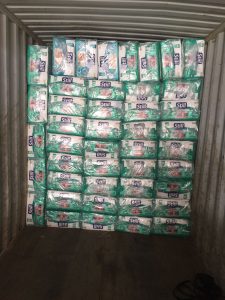Varieties and of Baby Diaper Manufacturing
Introduction to Baby Diaper Manufacturing
Varieties and of Baby Diaper Manufacturing Baby diaper manufacturing is a complex process that involves various stages to produce high-quality diapers for infants and toddlers. The process starts with the selection of raw materials and continues through the manufacturing, packaging, and distribution phases. The goal of every diaper manufacturer is to produce diapers that are comfortable, absorbent, and gentle on the baby’s skin.
Types of Baby Diapers
There are several types of baby diapers available in the market, each with its own set of characteristics and features. The most common types include:
- Disposable Diapers: Disposable diapers are the most widely used type of baby diaper. They are made from absorbent materials such as wood pulp and superabsorbent polymers, which help to trap moisture and keep the baby’s skin dry.
- Cloth Diapers: Cloth diapers are reusable diapers that can be washed and reused multiple times. They are made from soft, breathable fabrics such as cotton or bamboo, which are gentle on the baby’s skin.
- Biodegradable Diapers: Biodegradable diapers are eco-friendly diapers that are designed to break down quickly in landfill conditions. They are made from biodegradable materials such as bamboo or cornstarch, which reduce the environmental impact of diaper disposal.
Manufacturing Process of Baby Diapers
Varieties and of Baby Diaper Manufacturing The manufacturing process of baby diapers involves several stages, including:
- Raw Material Preparation: Raw materials such as wood pulp, superabsorbent polymers, and nonwoven fabrics are prepared for use in the manufacturing process.
- Diaper Core Formation: The absorbent core of the diaper is formed by combining layers of wood pulp and superabsorbent polymers.
- Diaper Assembly: The absorbent core is sandwiched between layers of nonwoven fabric and elasticated leg cuffs are added to prevent leaks.
- Packaging: The diapers are packaged in individual packs for distribution to retailers and consumers.

In conclusion, baby diaper manufacturing is a complex process that requires careful attention to detail to produce high-quality diapers. By understanding the different types of diapers and the manufacturing process, consumers can make informed choices when selecting diapers for their babies.
Characteristics of High-Quality Baby Diapers
Varieties and of Baby Diaper Manufacturing High-quality baby diapers have several key characteristics that set them apart from lower-quality diapers. These characteristics include:
- Absorbency: High-quality diapers are highly absorbent, which helps to keep the baby’s skin dry and prevent leaks.
- Softness: The materials used in high-quality diapers are soft and gentle on the baby’s skin, reducing the risk of irritation or rashes.
- Fit: High-quality diapers are designed to fit snugly around the baby’s waist and legs, reducing the risk of leaks and ensuring comfort.
- Breathability: Good diaper designs incorporate breathable materials to allow air circulation, reducing the risk of skin irritation and discomfort.
- Wetness Indicator: Some high-quality diapers come with a wetness indicator that changes color when the diaper is wet, making it easier for parents to know when to change the diaper.
Innovations in Baby Diaper Manufacturing
Varieties and of Baby Diaper Manufacturing The baby diaper industry is constantly evolving, with manufacturers introducing new innovations to improve the performance and comfort of diapers. Some recent innovations include:
- Ultra-Thin Diapers: Ultra-thin diapers are designed to be thinner and more discreet while still providing excellent absorbency.
- Eco-Friendly Materials: Many manufacturers are now using eco-friendly materials in their diapers, such as bamboo or cornstarch-based materials, to reduce environmental impact.
- Stretchable Diapers: Stretchable diapers are designed to provide a better fit and greater freedom of movement for active babies.
- Odor Control: Some diapers are now infused with odor-control technology to help keep unpleasant odors at bay.
In conclusion, baby diaper manufacturing is a complex process that involves careful selection of materials and innovative design to produce high-quality diapers. By understanding the different types of diapers, their characteristics, and the manufacturing process, consumers can make informed choices when selecting diapers for their babies.

